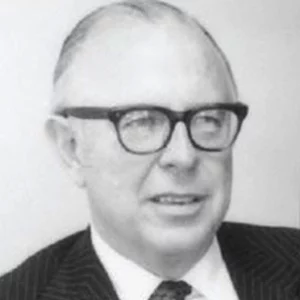There is a hypothesis that costs follow a definite pattern which is a function of accumulated production experience. If further research validates this theory then the implication for business management is far reaching.
If we consider business competition as a system in equilibrium, then this hypothesis introduces a whole new set of relationships which are of critical importance in establishing the stability of competition. The whole of business policy is affected from manufacturing cost standards to export policy.
Apparently the following conclusions can be justified:
- Reductions in cost of manufacture and distribution should be predictable.
- Stability of prices on purchased material should be predictable.
- New products should be priced as low as necessary to dominate their market segment or probably not be sold at all.
- Market share must be maintained at all costs as long as growth rate exceeds the anticipated rate of return.
- The value of market share can be calculated with enough accuracy to permit determination of the return on investment as the result of any change in share.
- Export potentials of a product can be approximated by relating comparative advantage derived from experience levels.
- The cost trade-offs of low labor cost versus concentrated production can be approximated.
- The probable stability of prices can be forecast.
Many of these issues are of major importance in formulating the basic policies which represent corporate strategy. Even if the experience-cost hypothesis should prove to be only partially applicable to these questions, it is still a major insight if it provides any significant understanding of these basic relationships.
Price and cost data show that costs decline by some characteristic amount each time accumulated experience is doubled. Given this, it is clear that not only can one’s own costs be projected, but costs relative to competitors can also be estimated, given some rather straightforward information about the market.
The characteristic decline is consistently 20-30% each time accumulated production is doubled. This decline goes on in time without limit (in constant dollars) regardless of the rate of growth of experience. The rate of decline is surprisingly consistent, even from industry to industry.
However, these observed or inferred reductions in costs as volume increases are not necessarily automatic. They depend crucially on a competent management that seeks ways to force costs down as volume expands. Production costs are most likely to decline under this internal pressure. Yet in the long-run the average combined cost of all elements should decline under the pressure for the company to remain as profitable as possible. To this extent the relationship is of normal potential rather than one of certainty. However, competition characteristically produces survivors who achieve the full potential.
Variances in “costs” shown in plotting experience curves are probably best interpreted as indicating change in rates of expenditure, or cash flows. Such costs should include all of the cost elements which may have a trade-off against each other. This therefore means all costs of every kind required to deliver the product to the ultimate user, including the cost of intangibles which affect perceived value. There is no question that R&D, sales expense, advertising, overhead, and everything else is included.
Any failure of the producer to relate any one of these cost elements properly to the other will have a degrading effect on the cost performance in serving the end user. This may be why the experience curve works, as it weeds out everyone who has not used the optimum combination of all cost elements compared to his competitors’ combinations. This also distinguishes experience curves from the well-known learning curve, the later relating only to labor and production inputs.
The growth rate of a product is an important factor in interpreting experience curves. If the production of a product is not growing, then the rate of cost decline per year gradually slows down and approaches zero.
When accumulated units of a product are increasing annually at a constant percentage rate, then each year of product experience produces approximately the same percentage effect on cost.
If competitors maintain the same relative market shares and have roughly equivalent histories of experience, then their costs will tend to move in parallel. If competitors’ market position changes, so do their relative costs.
There is a large amount of empirical evidence that this relationship is so fundamental that any deviation should be explainable. The implications for corporate strategy development are so sweeping that it is difficult to overstate them.
The theory of cost versus experience is more fully developed in the book Perspectives on Experience published by The Boston Consulting Group.
